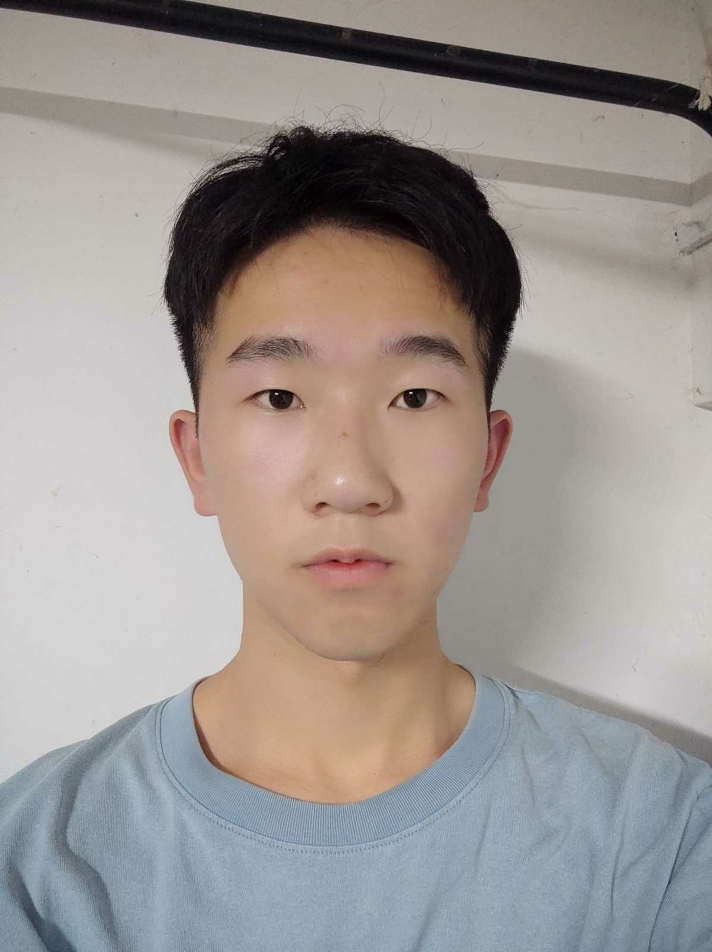This page is dedicated to showcasing the notable achievements of our students and contributors. Under the guidance of mentors from the Compiler Research Group, these talented individuals have achieved remarkable success in open-source software development and research advancement.

Garima was a software engineering student at Manipal Institute of Technology in Manipal, Karnataka, India when she started her first project with the compiler research organization. She has since made several contributions to compiler research, delivering 2 papers and presenting at four major conferences as oral presentations. She is currently (as of this writing) an MSc student at ETH Zurich.
Github Profile: grimmmyshini
Garima’s interest in error estimation led to her exploration of floating point error estimation in High Performance Computing (HPC) applications. This also led to her research on its applications in High Energy Physics (HEP). She explored how these floating point estimation tools can be applied to different software, to not just estimate errors, but to also perform different numerical analyses on the programs. These tools can be used, for example, for sensitivity analysis, and to improve your program’s precision to get higher performance.
For more details, please see the Error Estimation Framework document.
Garima explored the internal workings of the Clang compiler and applications of its Clad1 plugin, specifically for Automatic Differentiation. She issued several patches and bug fixes to these projects.
During her research, Garima came across the challenges faced by users when performing large-scale data analysis. She saw the potential of current state-of-the-art techniques to make analysis faster and more efficient. She also discovered that even small improvements to the workflow had significant impact on performance, when working at such a large scale. This work was particularly rewarding for Garima since she was able to delve deep into the theoretical properties of AD during this research.
For the error estimation work, companies can use this technology to not only determine any numerical instabilities in their code, but also to perform approximate computing techniques to make their software more efficient.
Clad has a lot of practical applications, especially in companies or organizations with scientific software. Garima’s work has demonstrated how Clad can be used with sufficiently complex codebases such as ROOT.
Opensource/ scientific software may benefit more from this work, as compared to the mainstream technology companies, since it is geared more towards exploratory science than consumer products.
Error estimation work is an exciting, new research area and can also be used on smaller-scale projects. The customizable nature of the tool allows researchers to create new analyses and share them with others in the form of papers or other scientific contributions.
On the RooFit-AD side, as RooFit grows and more classes change and evolve, the underlying AD framework also needs to evolve. It is safe to assume that users of RooFit would be interested in following up on this work to keep using AD with their statistical models.
The Compiler Research team attributes the community-wide acceptance of Automatic Differentiation to Garima’s work in demonstrating its usefulness in large codebases such as that of the ROOT Framework2, specifically in its RooFit3 classes.
Working with a large open source community and getting people onboard to implement a major shift from Numerical Differentiation (ND) to Automatic Differentiation (AD) was a great achievement in itself.
Garima values the overall exposure to the diverse community that these projects have provided her, including opportunities to present her work infront of large technical audiences, and publishing formal papers in reputable publications. Published work:
Garima attributes her success in these projects to several collaborators from Lawrence Livermore National Laboratory, Princeton Department of Physics, CERN (European Council for Nuclear Research), and Nikhef (National Institute for Subatomic Physics).

Jun is a 3rd year software engineering student at Anhui Normal University, WuHu, China. He was originally introduced to the Compiler Research team through Google Summer of Code. Since then, working on the Clang/LLVM infrastructure, he has contributed ~70 patches.
Github Profile: junaire
Jun’s major contributions are summed up in the following RFC:
It builds on top of previous initiative to bring Cling-REPL functionality in the upstream Clang repo for more generalized applications.
Background: Cling is an interpretive technology that is based on Clang. Cling-REPL provides REPL (read–eval–print loop) functionality for interactive programming. Moving parts of Cling-REPL to upstream Clang repository in the Clang-REPL component helps push the advancements achieved in Cling-REPL to a wider audience.
Following are the relevant patches:
A brief explanation of these changes can be found in the Clang-REPL document:
Besides making useful contributions to help the High Energy Physics (HEP) field, he was also able to land critical patches to the upstream LLVM repositories, that will reduce the technical debt and help Compiler Research Org adapt the upcoming LLVM versions more seamlessly. Some examples can be seen here and here.
Cling are most commonly used by engineers at CERN for High Energy Physics (HEP) computations. The goal of Clang-REPL is to generalize Cling and broaden the user base for different research and data science areas, especially when fast prototyping is a major requirement.
These features have opened up a new paradigm of interactive possibilities in C++ programming and as it gains traction, more users are expected to adopt this approach to achieve better performance.
REPL is a beginner-friendly approach to programming. Runtime value capture and pretty printing features are essential parts of REPL interactivity. Programmers who use Clang-REPL command line are very likely to use these features to help them to code and debug.
Runtime value capture connects the Compiled Code & Interpreted Code, which makes it easier for Clang-REPL enable C++ interoperability with other user-friendly languages like Python.
Clang-REPL is a general-purpose adaptation of Cling (which is more HEP-centric). Anyone who wants to learn about interactive features of Clang-REPL will also benefit from learning about how Cling works and how it evolved over time.
One of the areas of interest for Jun was: How to demonstrate my work to others?
Besides accomplishing the technical aspects of each project, a major personal achievement for Jun was pitching these ideas to the broader LLVM community (e.g., in LLVM Developers Meeting, Request for Comment (RFC) forum discussions, exhaustive code reviews, etc.) and demonstrating to them that these ideas would add value to their overall codebase.
Effectively communicating technical direction to a diverse audience from different cultures, while speaking in English as a second language was also a valuable experience.
Intellectual discourse with, and acceptance from, the veterans of Clang project provided Jun with valuable insights into the inner workings of open source collaboration.
Finally, Jun’s proactive approach in engaging reviewers and mentors was a great asset in pushing through these major changes in a large, remote, and decentralized open source project such as LLVM, where it is hard for a new comer to establish themselves as an expert (as opposed to brick-and-mortar companies, where it is easy to identify star performers).
Jun attributes his success in these projects to several collaborators from Princeton Department of Physics, and CERN (European Council for Nuclear Research).

Baidyanath was a software engineering student at Manipal Institute of Technology in Manipal, Karnataka, India when he started his first project with the compiler research organization. He is currently an MSc Computer Science student (as of this writing) at ETH, Zurich.
Github Profile: sudo-panda
This project required deep understanding of the two major programming languages used in statistical analysis. It helped bridge the gap between Python’s usability and C++’s performance. Baidyanath also enjoyed working with complex codebases, since the general programming wisdom directs most programmers towards code simplification, whereas with projects like these, code complexity is an inherent requirement.
Using the principles established during Python/C++ interoperability development, this was the next step in adding a third programming language to the mix. This meant more rules and restrictions since all three languages needed to agree on the specific operations.
Baidyanath’s work in Error Estimation Framework development was mainly focused on High Energy Physics (HEP) applications, but it also demonstrated its possible applications in other High Performance Computing (HPC) fields as well.
This was Baidyanath’s first exposure to compiler research. He found the restrictive nature of designing new software features both, challenging and rewarding. Specifically, template metaprogramming was a great are of interest for him.
During his IPDPS exposure, Baidyanath was please to interact with researchers who can use it for Climate Modeling. This is important because such models require a high level of accuracy. Another major use case is for Mixed Precision Analysis when using MLIR 4.
Interoperability is not only targeted towards scientific analysis, but also new programmers that need an interactive way of learning complex programming concepts. Languages like Python have a lower barrier to entry, and interoperability with more complex languages like C++ enables students to explore these languages in a simplified and fast-paced manner.
An important skill that Baidyanath was able to attain during these projects was the ability to convey his work to other technical people, who aren’t necessarily from the same field. Participating in several conferences and presenting in front of large technical audiences helped him develop the tools to help motivate people to experiment with a new project/research for their specific applications.
Baidyanath attributes his success in these projects to several collaborators from Princeton Department of Physics, and CERN (European Council for Nuclear Research).
for C++, implemented as a plugin for the Clang compiler.
storage, analysis, and visualization.
research, especially in the high-energy physics (HEP) field. It is an extension of the ROOT framework. RooFit provides a set of tools/classes to define and evaluate probability density functions (PDFs), perform maximum likelihood fits, perform statistical tests, etc.
make optimal use of a variety of computing platforms such as GPUs, DPUs, TPUs, FPGAs, AI ASICS, and quantum computing systems (QPUs). MLIR is a sub-project of the LLVM Compiler Infrastructure project.